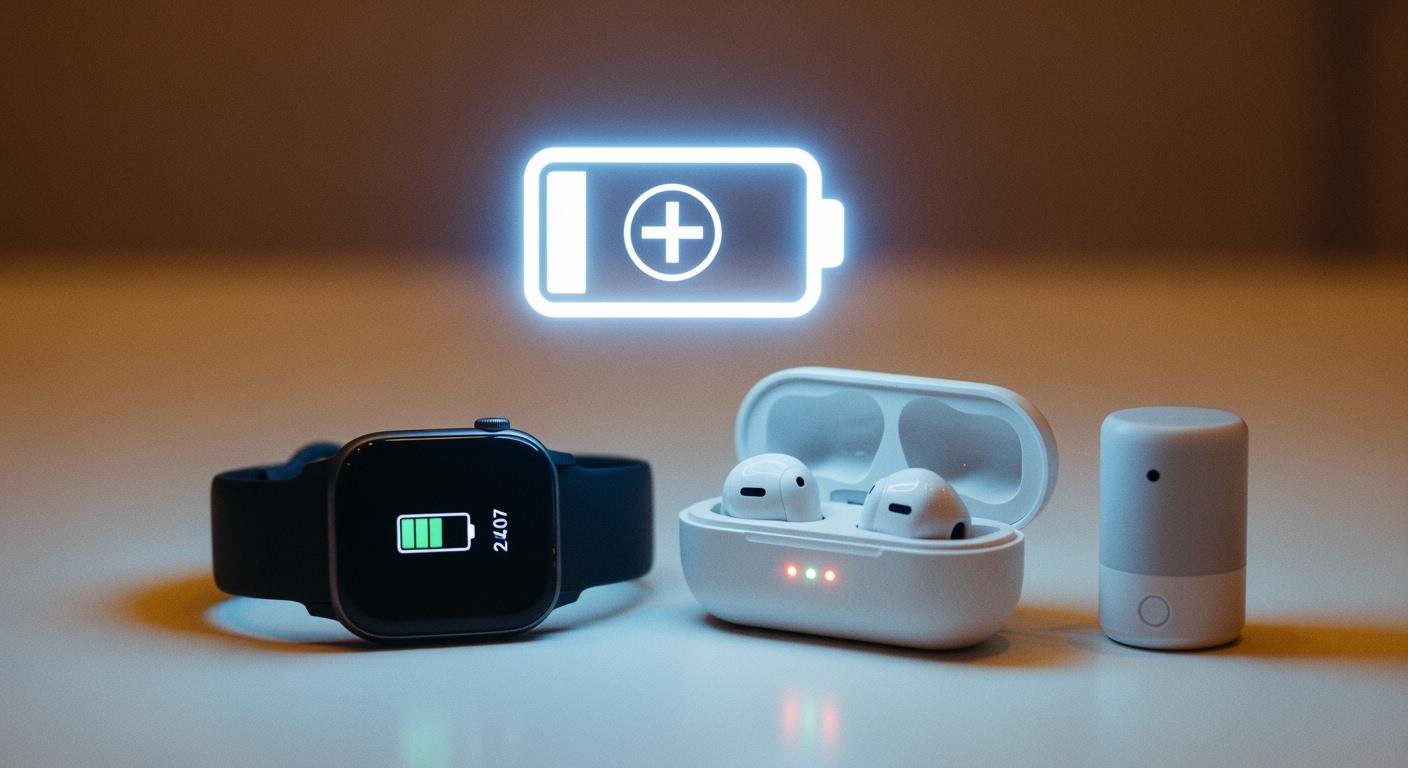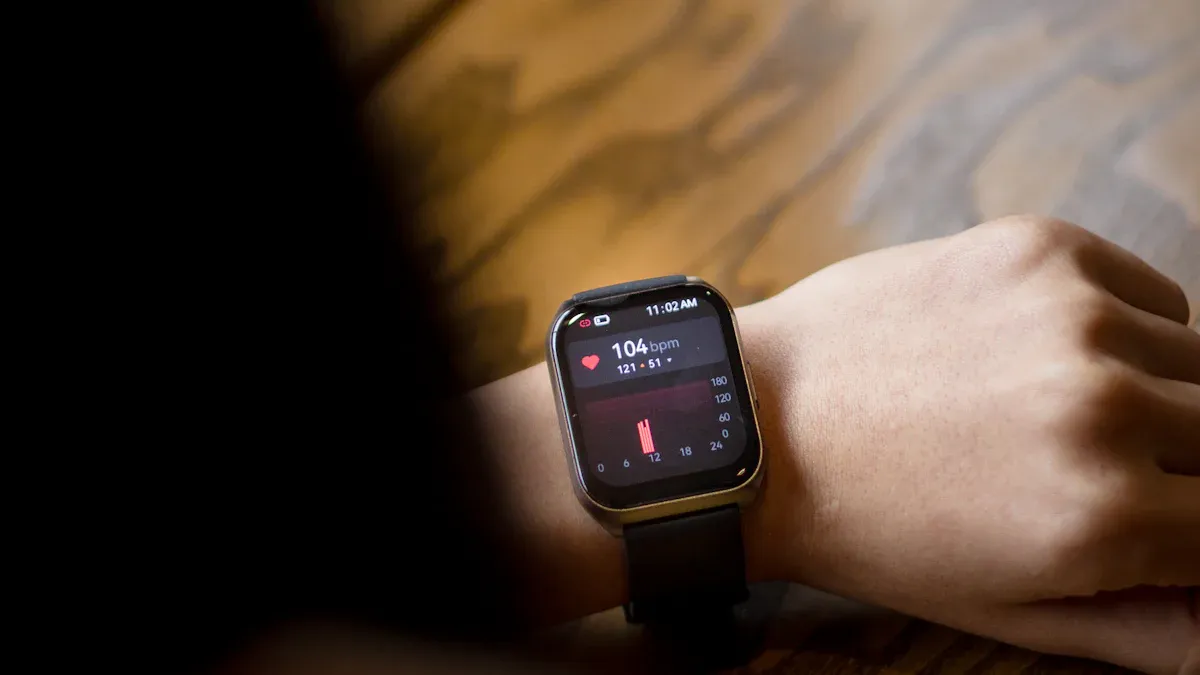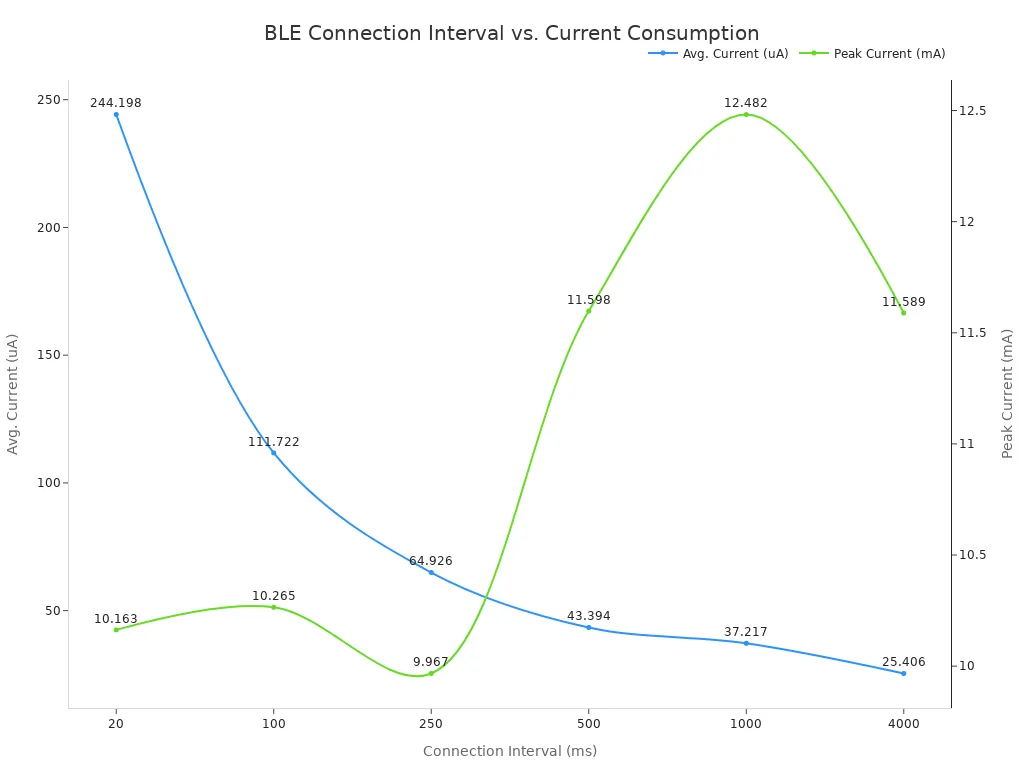
You feel that familiar panic when your favorite BLE device’s battery dies unexpectedly. This anxiety often starts long before the low battery warning appears.

These frustrating issues often stem from aggressive BLE settings, environmental factors, or incorrect charging habits. You can fix these BLE issues and significantly extend the life of your ble devices with a few simple changes.
Understanding BLE Battery Drain

To solve battery problems, you first need to understand what causes them. While Bluetooth Low Energy is designed for efficiency, several factors can drain your battery faster than you expect. These issues often relate to how your device communicates, its power settings, and even the software it runs.
How Bluetooth Low Energy Works
The secret to Bluetooth Low Energy is its ability to sleep. Your BLE devices save a massive amount of energy by spending most of their time in a low-power sleep state. They only wake up for brief moments to send or receive data. This process of maximizing sleep cycles is what gives BLE its impressive battery life.
However, the way your device handles data during these active moments matters. Frequent data transmissions for apps that constantly sync can still drain the battery quickly. To save energy, BLE chips are designed to be efficient.
- They can combine small data packets into fewer, larger ones.
- They can compress data before sending it.
- They can place less important data in secondary advertising packets that are sent less often.
This smart data handling minimizes the time the radio is active, which is key to conserving energy.
Aggressive Connection Parameters
Connection parameters are rules that control how often your BLE device talks to a central device, like your smartphone. Two key parameters cause major battery issues: the Connection Interval et Slave Latency.
Les Connection Interval is the time between each connection. A shorter interval means faster communication but uses much more power. You can see how shortening the interval dramatically increases the average current your device draws.
| Connection Interval (ms) | Avg. Current (uA) | Peak Current (mA) |
|---|---|---|
| 20 | 244.198 | 10.163 |
| 100 | 111.722 | 10.265 |
| 250 | 64.926 | 9.967 |
| 1000 | 37.217 | 12.482 |
| 4000 | 25.406 | 11.589 |

Slave Latency allows a peripheral device (like your fitness tracker) to skip a certain number of connection events if it has no new data to send. A higher latency value saves significant power. Many Bluetooth LE devices default to a short interval and zero latency, which prioritizes performance over battery life. A good balance, like a short connection interval combined with high peripheral latency, offers the best of both worlds: low power use during idle times and fast communication when needed.
High Transmit (Tx) Power
Transmit (Tx) power is the strength of the radio signal your BLE device sends out. A higher Tx power increases the device’s communication range but also consumes more battery. The relationship is direct: more power equals more battery drain. As a rough guide, reducing the Tx power by just -3dBm can nearly double your battery life.
For most uses, a standard 0dBm power level is a good starting point. This setting usually matches the battery life estimates provided by the manufacturer. If you find your BLE beacon has too much range, lowering its Tx power is an easy way to extend its battery life.
A Note on Environmental Stress 🌡️
Your battery’s chemical performance is directly affected by its environment. Extreme temperatures cause serious issues for the lithium-ion batteries in most Bluetooth devices.
- Extreme Cold (Below 0°C / 32°F): Cold slows down the chemical reactions inside the battery. This reduces its capacity, lowers its discharge voltage, and can even make it stop working entirely. Charging in the cold is especially dangerous and can cause permanent damage.
- Extreme Heat: High temperatures accelerate the degradation of internal battery components. This permanently shortens the battery’s lifespan and poses a safety risk of “thermal runaway,” where the battery overheats uncontrollably.
Inefficient Firmware and Apps
The firmware (the core software on the device) and the apps you use play a huge role in battery consumption. Inefficient code can keep the device’s processor awake when it should be sleeping, leading to unnecessary power drain.
Common inefficient practices include:
- Polling for updates: This is when an app constantly checks for new information, wasting energy. A better approach is using interrupts, where the device only wakes up when there is an actual event or new data.
- Failing to use sleep modes: Good firmware puts the processor and other components like the BLE radio into a deep sleep whenever they are not needed.
- Sending data too frequently: Apps that sync data every second when every minute would do will drain the battery much faster.
These software-based issues can have as much impact as hardware settings. Well-designed firmware is critical for achieving the long battery life promised by Bluetooth technology.
Extending Battery Life for BLE Devices

You can take control of your device’s battery life. Simple adjustments to settings, charging habits, and software can solve many common battery issues. These changes help you get the most energy out of your device.
Optimize Connection Settings
You can often change your device’s connection settings through its companion app. A longer connection interval is a great way to save energy. This tells your device to check in less frequently, which is perfect if it does not need to send data constantly. While every app is different, you can typically find these options by exploring the device or characteristic settings.
How to Find BLE Settings in an App
- Open the companion app for your bluetooth device.
- Find the section to add or configure a “Characteristic.”
- Look for options related to connection properties or access parameters.
- You might see standard bluetooth characteristics or custom ones.
- Adjust the settings to prioritize battery life over performance.
Changing these settings helps you balance performance and power. This gives you a better experience with your ble devices.
Adjust Transmit Power
Your device’s transmit (Tx) power controls the strength of its bluetooth signal. A stronger signal travels farther but uses more power. You can often lower the Tx power in the device’s settings. Reducing this setting is an easy fix for battery drain issues if your device is always close to your phone or hub. A lower power level for the ble radio directly translates to longer battery life. This simple tweak can sometimes double the time between charges for your ble device.
Practice Proper Charging and Storage
How you charge and store your device directly impacts its long-term health. Lithium-ion batteries, found in most ble electronics, do not like extremes. You should avoid leaving your device fully charged or completely empty for long periods.
For long-term storage, follow these tips:
- Charge the battery to about 40% to 50% capacity. This level is the sweet spot for maintaining battery health.
- Storing a battery at this middle-charge level prevents capacity loss and reduces self-discharge risks.
- Never store a battery when it is completely dead. Self-discharge can drain the remaining energy and cause permanent damage.
Temperature also plays a critical role. Storing and charging your device in the right environment prevents damage and extends its lifespan.
| Action | Recommended Temperature Range | Impact on Battery Health |
|---|---|---|
| Chargement | 5°C to 45°C (41°F to 113°F) | This range allows for optimal and safe charging. |
| Stockage | 20°C to 25°C (68°F to 77°F) | Room temperature ensures battery longevity and safety. |
| Stockage | Extreme hot/cold | High or low temperatures will negatively affect performance. |
| Stockage | Freezing temperatures | Storing a device below freezing can cause irreversible damage. |
Install Firmware Updates
Firmware is the essential software that runs your device. Developers frequently release updates to fix bugs and improve performance. These updates can solve major battery drain issues.
One case study showed how firmware optimizations extended a ble wearable’s battery life from 10 days to over 45 days. The developers achieved this by changing how the device collected sensor data and managed its ble radio. Instead of constantly waking up, the device used an interrupt-driven system to collect data in batches. This change alone reduced average energy consumption by nearly 3x.
The update also introduced a dynamic advertising system for the bluetooth le radio. The device switched between fast, medium, and slow advertising modes based on its connection status. This smart adjustment prevented the ble radio from wasting power when disconnected.
How Over-the-Air (OTA) Updates Work
OTA updates are delivered wirelessly to your device. The process is secure and straightforward.
- The new firmware is encrypted and uploaded to a server.
- Your device queries the server and downloads the update.
- The device then validates and installs the new firmware.
Always install updates when prompted. They often contain critical fixes for security and battery performance.
Troubleshooting BLE Issues and Failures
Even with perfect care, you might run into battery problems. This section on troubleshooting ble issues will help you identify and understand common symptoms. Knowing what to look for can help you solve minor issues and recognize serious safety hazards. This troubleshooting guide covers the most frequent battery-related issues you might face with your bluetooth devices.
Symptom: Won’t Hold a Charge
If your device’s battery drains quickly, it may be reaching the end of its natural life. Lithium-ion batteries have a nombre limité de cycles de charge. Over time, internal changes reduce their ability to store energy. A film called the Solid Electrolyte Interface (SEI) grows on the anode, which obstructs the flow of lithium ions and lowers the battery’s capacity.
Try a Battery Recalibration Sometimes, the software that reports your battery level is wrong. You can often fix this with a recalibration. To do this, let your device’s battery drain completely until it shuts off. Then, charge it back to 100% without interruption. This can resync the software with the battery’s actual charge level.
Symptom: Sudden Shutdowns
A device that shuts down unexpectedly often has a battery problem. These power issues can also cause other glitches. You might experience intermittent disconnections, slow data transfer speeds, or a complete bluetooth connection failure. This inconsistent behavior is often the first sign that the battery can no longer provide the stable energy your ble device needs for its bluetooth le radio. A faulty Battery Management System (BMS) can also be the cause, as firmware bugs may report incorrect cell voltages and trigger a shutdown to protect the device. These issues can lead to slow data transfer and poor performance.
Symptom: Physical Battery Swelling
A swollen battery is a serious warning sign. You should stop using the device immediately. Swelling happens when the chemicals inside the battery break down and release gas, such as carbon dioxide. This process, often caused by surcharge ou aging, builds up pressure and makes the battery expand. This is one of the most dangerous issues you can face.
A swollen battery presents severe safety risks.
- The pressure can damage your device’s internal components.
- It can rupture and release toxic gases that are harmful to your health.
- Most dangerously, it can lead to a fire or explosion.
If you see a swollen battery in any of your ble devices, do not try to charge or use it. Store it in a cool, dry place away from flammable materials and contact a local e-waste or hazardous waste facility for proper disposal instructions.
You can master your BLE device’s battery life. Focus on three key strategies to prevent common issues. First, optimize BLE connection settings and install firmware updates to resolve BLE issues. Second, manage your device’s environment. Proper temperature control significantly improves performance and can extend battery life by 15%.

Finally, adopt smart charging routines. These simple habits are the key to ensuring your BLE devices remain reliable and avoid future BLE issues.
FAQ
Is it bad to leave my BLE device charging overnight?
Most devices prevent overcharging, so it is generally safe. For best long-term health, you should try to keep your battery between 20% and 80%. Unplugging the device once it reaches 100% helps reduce minor stress on the battery.
Does turning off my phone’s Bluetooth save battery?
You save a very small amount of power. Bluetooth Low Energy uses minimal energy when it is not connected to a device. The battery savings are often unnoticeable. You can leave it on for convenience without worrying about significant drain.
Can I replace the battery in my BLE device?
This depends on your device’s design. Some gadgets, like certain sensors, have user-replaceable batteries. Many wearables seal the battery inside for water resistance. You should check your user manual or contact the manufacturer for specific instructions on battery replacement.
Why does my device die so fast in the cold? 🥶
Cold temperatures slow the chemical reactions inside your battery. This process temporarily reduces the battery’s capacity and power output. You will see performance return to normal once the device warms up. Avoid charging your device while it is still cold.

